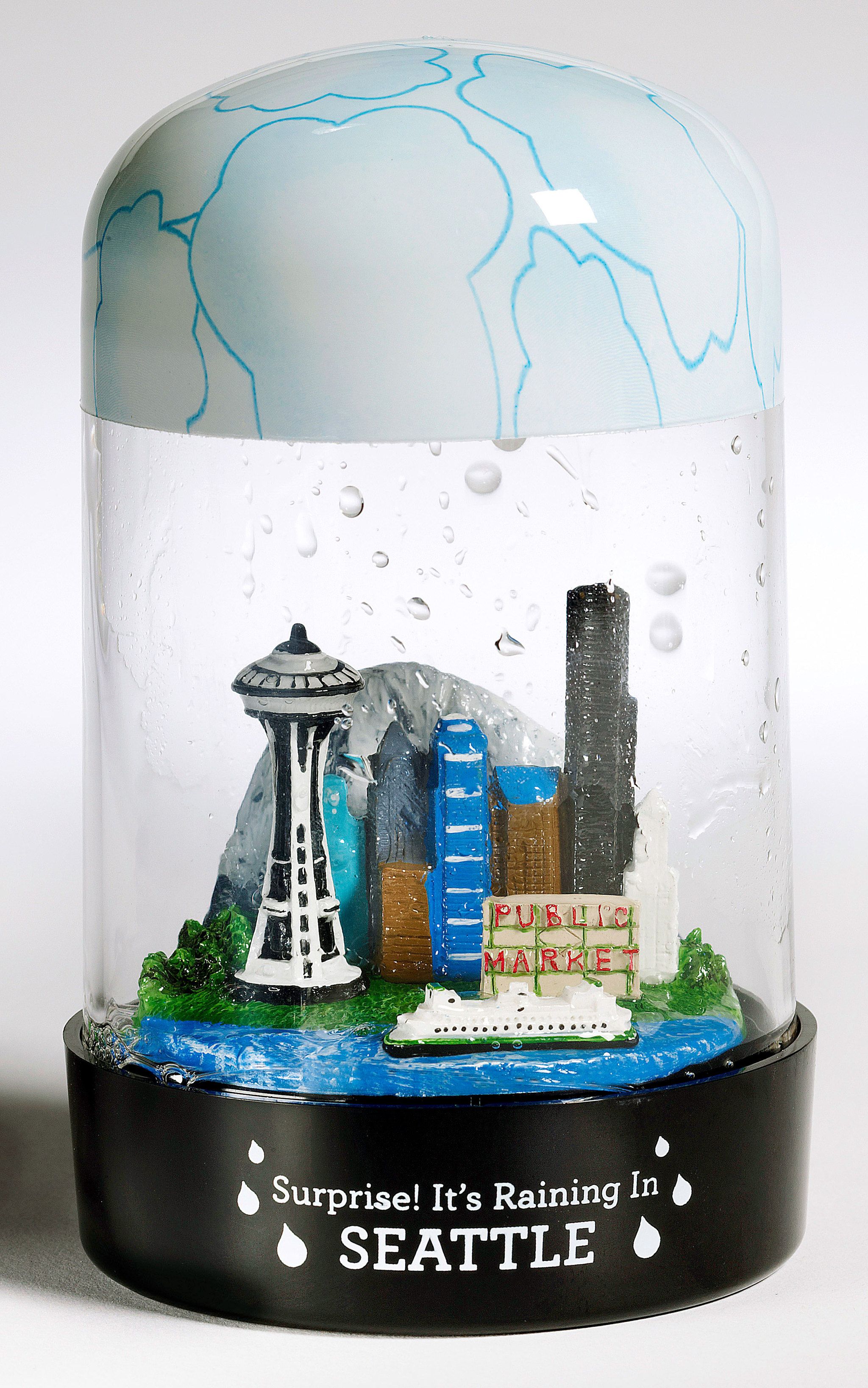In an office near Safeco Field, nine men and women control the weather.
They make it rain, with the flip of their wrists, over San Francisco, New York and Seattle. Squalls, deluges, tempests are their trademark powers, and that pesky drip-drop dribble that defines an Emerald City winter.
But before you plan a raid and blame these modern-day Zeuses for your December SAD-ness, know this: their globes are made out of plastic.
Josh James was killing time in SeaTac one January day in 2005, when it occurred to him that the snowglobe, while suitable for Austrians, skiers and “Frozen” fan girls, failed to capture the perpetual forecast of his own city.
Why was the snowglobe such a one-trick pony, a meteorological monopoly? Where were the heartwarming trinkets, sold abundantly in airport shops, that manufactured rain, storms and clashes of lightning?
James posed the question to his friend Fred Northup, who decided he was a genius. They launched RainGlobes two years later with the help of Northup’s high school buddy, Scott Larson, a Bainbridge Island-based investor who knew all about startups, with their 18-hour Mondays and giant vats of chili.
But arguably the most important moment in their company’s history sounds like the beginning of a joke: A auctioneer and an engineer were stuck on an airplane.
The auctioneer was Northup, the engineer, Jeremy Kolenbrander. Northup, a chatty guy, asked Kolenbrander what he did. Kolenbrander said something like, “My expertise, which I’m hired by medical device companies to perfect, is IV drips,” and so the ugly Tupperware and cocktail pick prototype Northup had built was tossed aside.
Since the first RainGlobe hit the market, in 2010, the company has created 15 designs, including Seattle, Ketchikan, the Oregon Coast and Noah’s Ark. They’re sold at 150 locations across the Pacific Northwest, from Zamboanga, at 112 Winslow Way, to Made in Washington to Hudson News stores.
But Larson’s team is not at all finished. They want world domination, which really just means London. It’s the No. 2 tourist destination and drizzly, to boot.
“We always thought it was the sweet spot on our mental map,” the investor/ventor explained. “Even in the soccer matches on TV, the announcers say, “‘I can’t believe it’s not raining!’”
The entrepreneurs keep a list of 170 concepts at their Pioneer Square headquarters, organized by theme and region and special effects. They also have patents for waterfall globes and a pump-based globe that sends water flying (in a twisterglobe, Dorothy and Toto spin for eternity).
But 100,000 units in — they’ve sold $3 million worth of RainGlobes in six years — Larson says it’s too overwhelming to do all the idea conjuring, drafting, color-picking, prototyping and assembling with such a small team. They’re ready to license their products to the big guys, Hallmark, Disney, Mattel.
The hardest task, maybe surprisingly, is deciding what features make it into the diorama, especially in the regional pieces.
“You have to select seven objects to represent the state of Washington, and you can’t include any Seattle landmarks because we already have a Seattle RainGlobe,” Larson explained.
“That’s a challenging process. We want an orca whale, we want an eagle, we want to represent the coastline.”
The vampire on a piece of driftwood, a shoutout to Forks, does not make the cut.
There’s also the matter of human hands. A guy who makes figurines for Xbox master-paints the “Golden Sample Prototype,” which is Fed-exed to China for mass production. His huge magnifying glass is only so powerful, Larson explains. So Mount Rushmore is impossible, with its chiseled presidential busts.
But that’s OK. We’ll take a rain check.


